Text
Garlic Butter Cajun Fried Rice
If you ever had garlic butter fried rice, we know that it is that good that it doesn't even need egg to taste well rounded. If you never tried garlic butter fried rice, the ingredients are in the name itself. Garlic, butter, rice. Perhaps a bit of salt if your butter is unsalted. Other than garlic and butter combo, I really love cajun seasoning, making it a trio: the cajun garlic butter sauce. Doesn't it sound really good to be made into fried rice, especially if you happen to have shrimp sitting in your freezer waiting to be used?
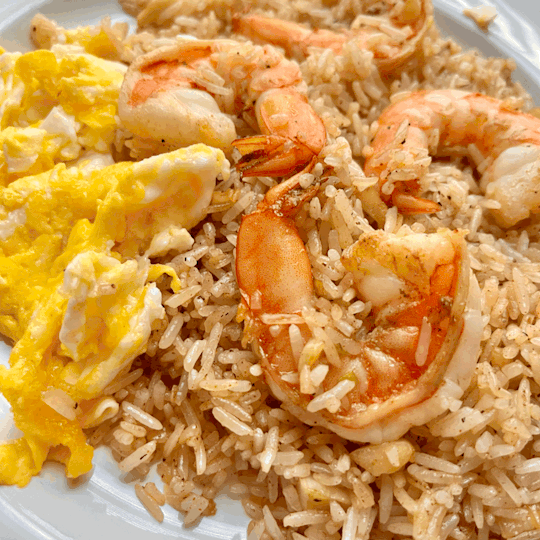
Ingredients:
1 cup of cooked, day-old rice
5 cloves of garlic, minced
2 Tbsp of butter
1 tsp cajun seasoning
1 egg
salt and pepper to taste
5 raw shrimp, peeled (optional)
Instructions:
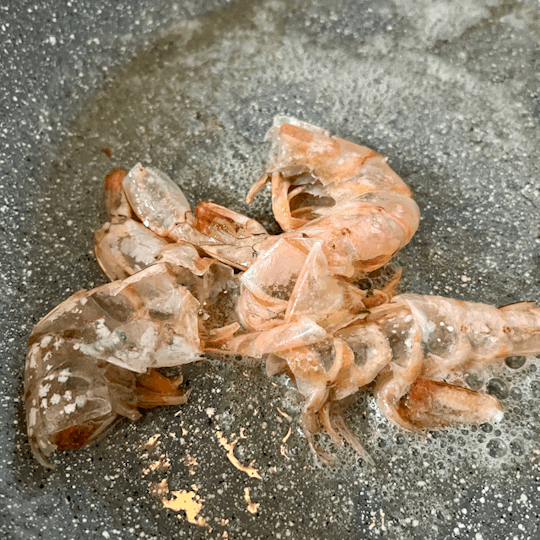
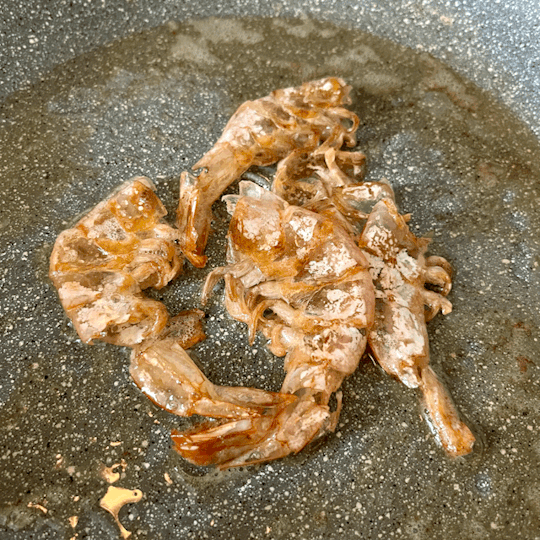
Melt butter in a hot pan. If you are using shrimp and have the skin, cook the skin in the butter on medium-low heat until the skin is blistered to infuse flavor. The butter will brown, but do not set the heat too high since it could burn. Throw away the skin. Otherwise, skip to step two:


Cook garlic and cajun seasoning in the butter on medium-low heat until foamy, do not let the garlic burn. Season with salt and pepper to taste.
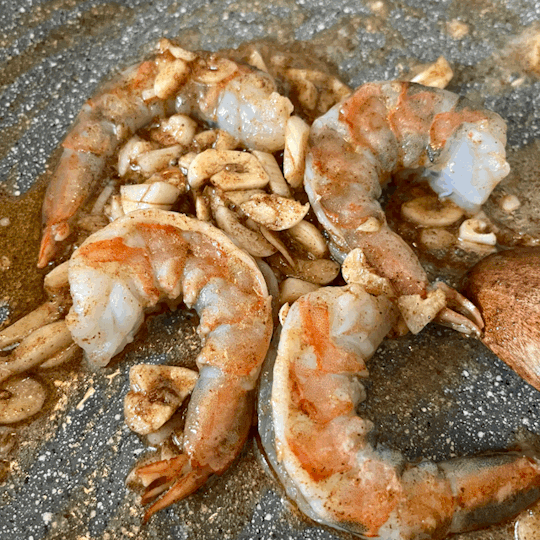

Put shrimp in the seasoning, cook until shrimp turn pink, then add rice. Stir until combined. Taste, adjust as necessary.
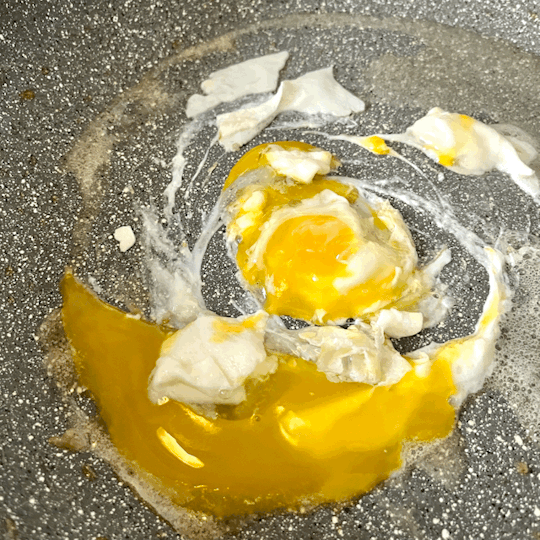
While you can add egg before the shrimp, I like to be able to feel and chew the garlic bits, so I cooked my eggs separately. I scrambled them.
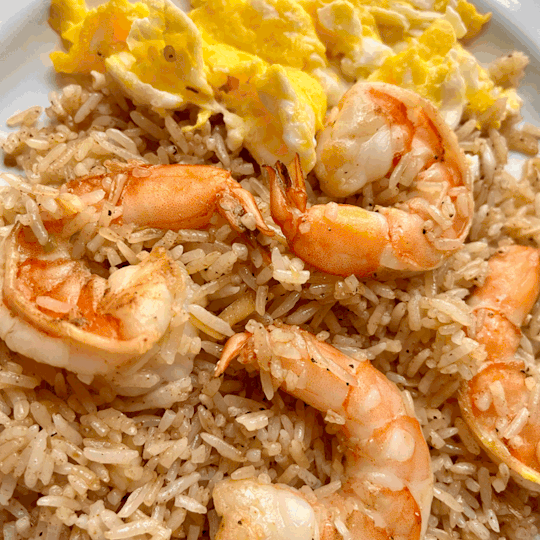
Serve hot immediately! Be careful to not eat them every day. This calorie bomber is for special nights.
4 notes
·
View notes
Text
Love Letter to Thanksgiving
As a writer who writes for a Peranakan-themed food blog, I assume that my readers might have an impression that I cherish my family relationship in conjunction of me celebrating my Peranakan roots.
From the third-person perspective, my parents look like the perfect epitome of a typical patriarchal family in a Southeast Asian country. My dad works in a profession that requires 18 working hours and my mom takes care of the family finances and the kids. As for my mom, I know that she grew tired of childrearing as soon as she had to take care of seven children: my sister, my brother, me, and my four cousins. My cousins were taken in our house at the same time since two of my mom’s single mother sisters decided to immigrate to first world countries to provide for their children. Despite how tired my mom looked, she always did her best in cooking, from which I grew to develop love for Hakka cuisine.
My mom and dad, at different times, are often seen trying to make up for their own time by solo traveling or indulging in their hobbies. We stopped celebrating Chinese New Year and Christmas when me and my siblings hit our teenage years, after my cousins left the house to reunite with their mothers. However, dining as a family in the dining table is always a rare occasion.
I only have one fond memory of Christmas at home, when I was probably five years old. I had socks and coloring pencils as my gift. Same goes to the other six children in the house. But I was so happy since my pair of socks were in different color. After that, I remember that since I was nine years old, we started traveling to different countries every Christmas and New Year holiday. Just as I thought about it now, I think this was due to my dad’s ability to earn more, he finally has the chance to compensate us with what he thought is more valuable. Perhaps he’s also doing it to make up for his and my mom’s lost time too. In my heart, while I appreciate their efforts, all I really want to do is to gather in a table and have a feast with my family and have heart-to-heart conversations.
When I came to the United States, I had one chance to celebrate Thanksgiving with one of my mom’s sisters who immigrated here. As the dinner went by, I realized that I am in the setting I have wanted, but my parents are not here. My heart longs for connection, but I can’t seem to connect on emotional level with my aunt and my cousins who I grew to be a bit bitter with. I had this mindset that their family contributed to my family’s relationship that became distant. But it was not their fault, no one intended to hurt anyone. I was a child, and I did not have the ability to understand the bigger picture.
On my second and third year here, I celebrated Thanksgiving with my circle of friends. We would cook other meats but Turkey, since we know that our group of four will not be able to finish the whole thing. Although the celebration was comparably simple and I felt anxious all the time about my cooking, I am grateful of the conversations and memories we had. I began to understand that meaningful friendships do exist and connecting with people on emotional level is possible.
2021 is my fourth year in the United States. I am graduating and leaving in December, which means that this is my final year to celebrate Thanksgiving here. I don’t know if I would host and celebrate one this year, since I am currently grieving for a lost relationship. I have this mixed feeling of celebrating during a time of grief, perhaps it’s just me feeling guilty to myself, thinking that I am undeserving of happiness in these times. But I know that in the next year, I will look back to this day and be able to see it differently. Perhaps I will continue celebrating one when I go back to my home with my parents, to show them how fulfilling it is to gather in a table with hearty meals. This year, I am thankful for what Thanksgiving taught me.
0 notes
Text
The Secret Peranakan Dish at Philly's Sky Cafe
Although I have lived the 18 out of 23 years of my life in Indonesia, I have to admit that I was the kind of person who would often be asked "you really have not tried that yet?" When it comes to Indonesian food.
I remember that I was 18 at that time, just finished my shift working at my friend's coffee shop, when another friend of mine Lio texted me, "do you want to get kwetiau goreng sapi?" Kwetiau goreng sapi is a kind of Indonesian fried flat rice noodle dish. It is similar to char kway teow, the kind of fried flat rice noodles from Malaysia and Singapore that uses seafood. In broader sense, the array of stir-fried carbs is formed as a result of Chinese influences on the Southeast Asian cuisine. However, due to the fact that Indonesia has the biggest Muslim population in the world, it uses beef instead of pork. Whoever came up with the idea of using beef is brilliant. Not only because beef is a popular choice of protein there, but because fried flat rice noodles + beef = 100% delicious.

Since I never tried kwetiau goreng sapi before, I said yes to her offer. I met her at this fluorescent-lit shophouse that sells the kwetiau around North Jakarta. They only have one menu, kwetiau goreng sapi. As soon as the plate of steamy kwetiau came, lined with banana leaf, the aroma of charcoal-burnt steak bits filled my nose. As I bit into the ribbons of chewy kwetiau and beef slices, the smell of white pepper and charred scrambled egg bits unearthed, making it one unforgettable bite that got me thinking: "where have I been all this time?" I unconsciously decided that I would always order kwetiau goreng sapi as much as I could, until I left for college.
When I moved to Philadelphia, I thought that I would never be able to taste kwetiau goreng sapi, after visiting all seven Indonesian restaurants and eateries here. However, one restaurant in particular is able to fulfill my quest for that charcoal wok aroma (also known as "wok hei"), Sky Cafe. They serve an array of stir-fried carbs: rice, rice noodles, flat rice noodles, egg noodles. There are chicken, shrimp, pork sausage and egg. But they never say that they have flat rice noodles with beef. Around three years ago, I asked Betty, the owner of Sky Cafe, "do you make kwetiau goreng sapi?" She answered with a bit of hesitance at first, "no one asked that before, but I know what you want." And the rest is history. I have been coming back to Sky Cafe for the same thing, yet it was never a written menu item. It's available whenever I visit, so I think you might want to give it a shot. Just ask if you can have fried flat rice noodles with beef or "kwetiau goreng sapi."
Prior of going into Sky Cafe, it is mandatory for me to visit a supermarket called Hung Vuong Supermarket (https://hungvuongmarkets.com), just one door away. They carry a wide range of items from the East Asia and Southeast Asia.

This place is particularly very famous among the Southeast Asian diaspora, since they are the biggest supermarket in Philly area that carries the most items. Ranging from sator beans to frozen salted egg yolks, this place always makes me feel like I am shopping at my home country. They even carry rare fruits such as rambutans:

This fruit might look like baby dragonfruits, but when you cut them open, you will realize that they are closely related to lychee and longan. Rambutan, in my language, means hairy. Do you think these fruits are prickly or hairy? I think they are spiny.
Similar to my experience with kwetiau goreng sapi, I actually never had rambutans until I was a teenager. The reason for this is because rambutans are barely sold in stores in Indonesia, and you need to look for street vendors or ask your neighbors with rambutan trees for these.

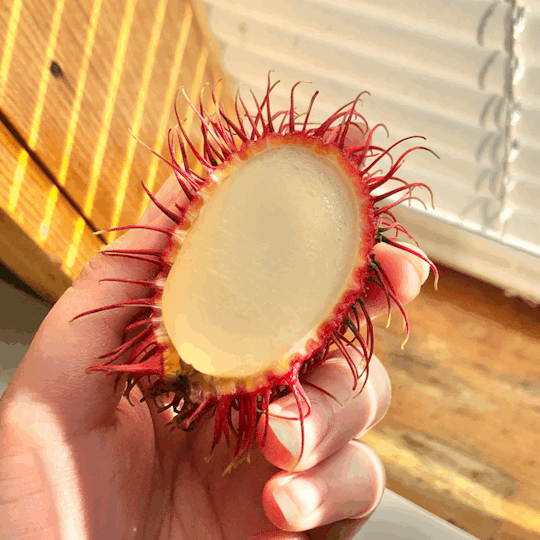
The texture of rambutan flesh is very similar to lychee, however it is a tad bit thicker and the sweetness is always on point like longans. I taste no sourness or tang at all. Since they are really sweet, I really love snacking on these as candy alternative.
I always leave the store thinking, "how did I shop so much?" But no regrets! Rewarding myself with kwetiau goreng sapi makes it all worth it. Yes, sapi, the beef. Different kind of protein gives different characteristic, but beef is my favorite. It is distinctively different in sweetness compared to chicken, but not as sweet as shrimp and pork sausage. I think that the ribbony, almost shaved-like consistency of beef is what makes kwetiau goreng sapi very addictive to me. Other kinds of protein contrasts to the noodles since they are chunkier. But flat rice noodles and flat meat slices contrast in texture, not shape. This gives the experience of comfort in eating homogenous-consistency food, but not quite. Just almost.
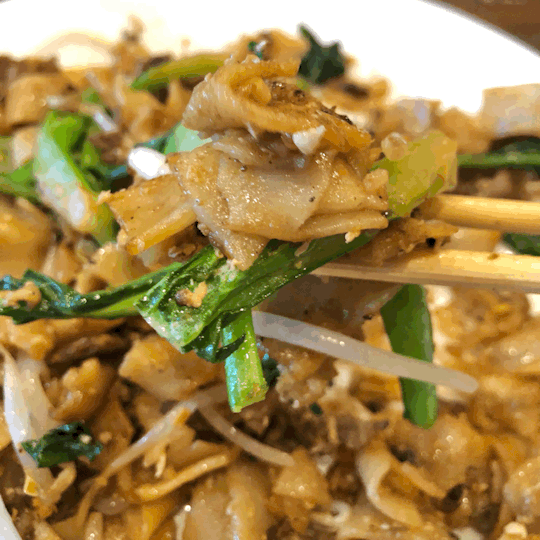
If I think about it, I think I have not really been asking restaurants or friends about secret menu items like this. Maybe I'll find another gem!
3 notes
·
View notes
Text
Indonesian Mochi From My Friend's Family Recipe
Do you know that in the many regions of East and Southeast Asia, people love to eat mochi-like dumplings? While mochi is commonly known as a Japanese delicacy, it actually originates from China, where it is called tang yuan (boiled rice flour dumplings with sweet black sesame filling). In Indonesia, mochi comes in the similar form of the popular mochi ice cream in United States: colorful and the skin is pre-cooked, not boiled like tang yuan. It's called moci, which has peanut and sugar filling. The texture contrast of ground peanuts and chewy skin leaves you wanting to chew more. Mochi and other mochi-like delicacies are eaten at different occasions, but they can be eaten any time of the day, year-round. In Japan, mochi is a traditional item eaten during the new year as a symbol of good luck. In China, tang yuan symbolizes reunion. In my country, moci is eaten as snack.
Most mochi is made with glutinous rice flour, however, variations among families exist. The variations are usually made to cater different preference of chewiness, by adding other types of starches (corn, rice, tapioca, warabiko, and many more).
I was on a weekly catch up session with a middle school friend of mine, Yasmine Hudiono, talking about what we ate that week and what we want to make the next week. Over the past three years, Yasmine and I grew to bond over our interest in cooking. She was telling me that her new job as a corn byproduct sales specialist introduced her to this knowledge that there is actually contrasting difference between many types of starch. That is when she said, "do you know that my family usually makes moci with tapioca instead of glutinous rice?" I asked her, "how is tapioca different from glutinous rice?"
The moci is made in the same manner like making it the usual way. However, by swapping the glutinous rice flour with tapioca, it results in major texture difference. If glutinous rice flour results in tender, a bit sticky, and chewy skin... Tapioca results in bouncy, stretchy, and non-sticky skin that retains itself more. If you think it is similar to boba pearls, it is not. I absolutely love the different experience of chewing the tapioca-based skin. As you bury your teeth into the skin, they don't instantly tear, but they kind of get squished as if they were about to burst. As I am trying to describe the texture, somehow I got reminded of this scene from The Incredibles when the dad got shot by multiple amount of boba-lookalike sticky balls.
The only challenge here is the difficulty in handling the dough. Since tapioca tends to retain itself more, it is little bit hard to stretch compared to glutinous rice flour. But I think the result is worth the effort!
Ingredients:
1 cup tapioca flour, for skin
1 cup water
1/8 teaspoon of neutral oil
1/2 cup peanuts or cashew nuts (I mixed both), roasted and unsalted
1/4 cup brown or white sugar (I used brown for the caramel flavor)
1/4 tapioca flour, for dusting
Instructions:
Dry roast nuts on hot pan until you can hear it sizzle. If using raw nuts, put in in 350 F oven, stirring occasionally until the natural oil is released
Pulse nuts and sugar in food processor until they become a bit like dry, crumbly paste. The natural oil of the nuts will make them come together in chunks
Dry roast 1/4 tapioca flour on lowest heat possible until the flour is very powdery, even more powdery compared to when they come from the package
Stir 1 cup tapioca flour, water and oil in a nonstick cold pan until a slurry is formed
Turn on heat on medium, stirring the mixture with a strong spatula. When they start to curdle, turn the heat to lowest setting and continue stirring until a dough form
Continue turning the dough around until it becomes translucent, looking like a chicken breast. Remove and to a plate dusted with the heated flour and dust with flour on top. Let cool to warm temperature
Divide the skin dough into small portions
Take a portion of dough and stretch with your fingers. Maintain the shape by sticking it to your fingers and scoop fillings. Close the dough with pleating motion, moving slowly to ensure that the dough will not rip
Dust the dough to prevent sticking
Tips:
The dough is sticky, but it is mostly sticky to itself
It is important to not panic when it sticks to your finger. Just lift your finger slowly and the dough should pull itself from your finger
If tapioca sounds too intimidating, feel free to swap 1/4 of the tapioca flour with rice flour. Rice flour, different from glutinous rice flour, does not have sticky and glutinous characteristics, similar to cornstarch
1 note
·
View note
Text
French Onion Fried Rice
Honestly, I already had this recipe written down in my phone way before I actually made it. If garlic and scallion combo is really good for my usual fried rice, how would onion be? Turned out, it was a great idea. Try making this for a dinner, and yes! You can open that bottle of red wine.
Ingredients:
1 cup of cooked, day-old white rice
1/2 of an onion, chopped
1 Tbsp of butter
1 tsp of oil
1 Tbsp worcestershire sauce
1 Tbsp of ketchup or tomato paste
1 Tbsp of mayonnaise (I used Kewpie)
salt and pepper
grated gruyere cheese, just enough to cover or as desired
Instructions:
Melt butter and oil on a hot pan
Cook onion on high heat until soft. Season with 1/4 tsp of salt to draw out moisture from the onion. When it starts changing in color, lower the heat. Keep stirring occasionally to ensure even color, until onion is caramelized
When onion is caramelized, deglaze pan with worcestershire sauce and add ketchup. Stir and taste. Season with more salt if necessary. Keep in mind that we will add rice, so this mixture should be strong yet balanced in salt, sweetness and tang
Stir in rice. Turn heat to medium and mix until everything is incorporated. Season with pepper and taste again, adding salt if necessary. Turn off the heat and finish with mayonnaise
Pack the rice on heatproof bowl
Top rice with grated cheese until covered
Melt the cheese topping with torch/broiling in oven/air fryer on 400 F or 182’C just until the cheese is melted. If using air fryer, pour some water in the basket to create steam
Tips:
If you are using super dried-out old rice, steam the rice first or microwave with water until soft. Don’t worry, dried-out rice won’t mush together even when they are hot
You can add steak to make this dish more balanced and taste like the actual french onion soup
If you can’t find gruyere, swap with any kind of aged, medium-hard cheese like parmigiano, grana padano, pecorino, emmental, and gouda. You can mix some soft cheese like mozzarella if you like the top to be soft.
#french#french onion soup#french cooking#chinese#chinese cooking#fried rice#dinner#recipes#easy recipe video
17 notes
·
View notes
Text
Conversation With Cecillia Dita: Embracing Multiculturality
Inspired by the diversity of Peranakan culture, Cecillia Dita thinks that food is indeed a way of passing down one's culture. In this post, we talked about what it meant for her to be a Peranakan.
All photographs taken by Cecillia Dita.

Q: Hello! Please introduce yourself to the readers, and about your family’s background.
A: Hello! My name is Cecillia Dita or Cecil. I am 24 years old and currently studying photography. My father is part-Chinese and part-Indonesian, my mother is Indonesian. My big family has a good mix of individuals with different religions.
Q: How do you think your family’s background has contributed to who you are?
A: I think that I am very lucky to be born into a family whose members really appreciate each other’s culture. Each of them really puts their best effort to show me how we can pay our respect to others while living in diversity. Every year, I celebrate three big, cultural celebrations: Christmas, Chinese New Year, and Lebaran (Eid-Al-Fitr, Islamic celebration of the fasting month ending). Tolerance is the most important characteristic you can have to maintain peace. Especially in a mixed-ethnicity situation like mine, well, you have two bloods in you. It will forever be a part of you, even if one day you come upon a situation where you start to dislike some parts of your identity. The way to live like this is to make peace with who you are.
Q: What are you most excited about during family gatherings and celebrations?
A: Gathering with my big family always reminds me of how unique we are. During Chinese-related celebrations, I cherish the moment when I pray for my ancestors.

Cecillia's ancestor's home.
Q: Tell me about the food culture in your family.
A: During Lebaran, we eat the classic: opor ayam, sambel kentang, and rendang. During Chinese New Year or other Chinese-related celebrations, I’m always excited for the sweets: kue mangkok, muah chee, and mooncake. We also always have ketupat during Chinese New Year, it just makes sense to us. We eat these dishes (photo below) during Chinese New Year, although other families might do it differently.

Chinese New Year food in Cecillia's family.
Q: Do you think it is important to continue your family’s traditions?
A: Absolutely. Tradition plays a role in how I perceive myself. Other than that, I think it is inherently important to respect those who came before you. One tradition that is important to me is to “meet” and make offerings for my ancestors during the big days (context: Chinese culture believes that during Ceng Beng or other celebrated occasions, the ancestors’ spirits come to visit and bless their descendants).


Left: offerings.
Right: “ghost money” tradition which involves burning special kind of paper, believed to benefit the ancestors as money in their afterlife.
Q: Do you have a suggestion for today’s Peranakans on how to preserve the traditions?
A: Perhaps, the least complicated way to preserve traditions is through food. Pass on the traditions by bringing your family’s food to your future family. It’s a flexible format too, you can adjust the dish again to fit everyone’s taste. Food is a great way of keeping the traditions alive.
0 notes
Text
Italian Sausage Fried Rice
Reading the title above, one might think “why is this individual already calling fried rice an Italian dish on their first blog post?” Let me explain. I am not calling fried rice an Italian dish. It is a fried rice dish which includes Italian sausages in it.
For the first entry of this blog, I decided to start off with a recipe for my FRIEDRICIFY series! FRIEDRICIFY is a recipe series where I will be making fried rice inspired by cuisines which traditionally will not have fried rice recipe.
The beauty of Peranakan and other kinds of cultural assimilation to me is seeing how other people from across the globe have similarities with us. Especially in things that we find comforting. Why is it that many of us in Eastern Europe, East and Southeast Asia find ground-up meat wrapped in flour-and-water-dough satisfying? Why do we find things that contain gluten to be delicious? Why do many people in many cultures find soup comforting?
Fried rice, wherever it exists, can give some hints about many things. Who made this? What did they have last night? What ingredients are common to them? Thus, I think that trying to make fried rice out of other cuisines will challenge me to learn more about other cuisines. It is not an easy task to find ingredients that will pair well with rice. Why not make a challenge out of these thoughts?
I will be posting a recipe for this series every week from the last week of October until November. If you have suggestions for cuisine I should try making fried rice of, let me know in the comment! This will be an exciting, challenging month. I can’t wait to refresh my palate with new food combinations.
When I first tried to come up with a recipe, it felt like I was going through my mind's archives of comfort food similar to (but not) fried rice. Rice, what is similar to rice? Noodles... Pasta... I love gnocchi. With butter. Can I incorporate potatoes into fried rice? Well, maybe protein? Then, that was when the memory of me eating a pasta dish at Barbuzzo (way before the pandemic) hit me. I did not remember the name of the dish, but most definitely, it had some spicy, sweet, a bit tangy Italian sausages in it. I remember that I ate it for dinner with my boyfriend, Mike. That was also our first time having warm, cast iron-toasted bread pudding as dessert. What a pleasant dinner.
Anyway, this fried rice dish will taste a tad different from the soy sauce-flavored fried rice, since it relies mostly on the flavor of the sausage. So, make sure to choose a sausage brand that you already know has good flavor. If this is your first time having Italian sausage, this is a good time to explore the options.

Italian Sausage Fried Rice
serves 1
Ingredients:
2 cups of cooked white rice
4 links of regular-sized Italian sausages of your choice, cut into bite-size pieces and/or taken out of the casings
3 cloves of garlic, chopped
1 Tbsp. of Italian seasoning herb mix
1 large egg
1/2 Tbsp. of extra virgin olive oil
few stalks of parsley, chopped (optional)
11/2 Tbsp. of neutral cooking oil

Instructions:
1. Heat frying pan or wok on medium heat. Add 1 Tbsp. of neutral cooking oil. Distribute sausages evenly. Smash the sausages that are taken out of the casings to preferred size. Pan fry until sausages develop light char.

2. Turn heat to low. Mix in garlic and Italian herbs. Stir fry until garlic is softened and herb aroma can be smelled.
3. Mix in rice. Stir until the rice gets coated with all ingredients and seasonings. If using spicy sausages that usually make the oil turn a bit orange, stir until the rice gets even color from the oil.

4. Make an empty space in the middle of the wok or pan. Put in 1/2 Tbsp. of neutral cooking oil in the space. Crack an egg in. Turn up heat to medium. Wait until the egg cooks halfway. Scramble. Mix all ingredients in the wok, not waiting until the egg gets cooked through. Season with salt and pepper to taste. Stir fry on high heat until egg is cooked and everything is mixed evenly.
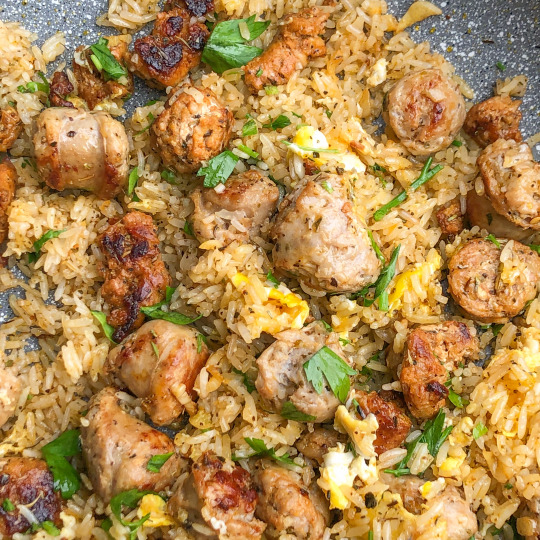
5. Turn off the heat. Stir in chopped parsley, reserving some for garnish. Stir in 1/2 Tbsp. of extra virgin olive oil.
6. Plate everything and garnish with chopped parsley.
Tips:
Use long grain white rice for best result and ease of cooking (I used Jasmine). At least one day old, cold rice is the best.
If not using steel wok, nonstick pan with high sides is also very forgiving. I prefer nonstick in my limited-space college apartment.
4 notes
·
View notes